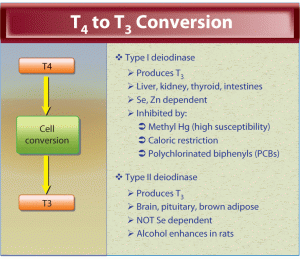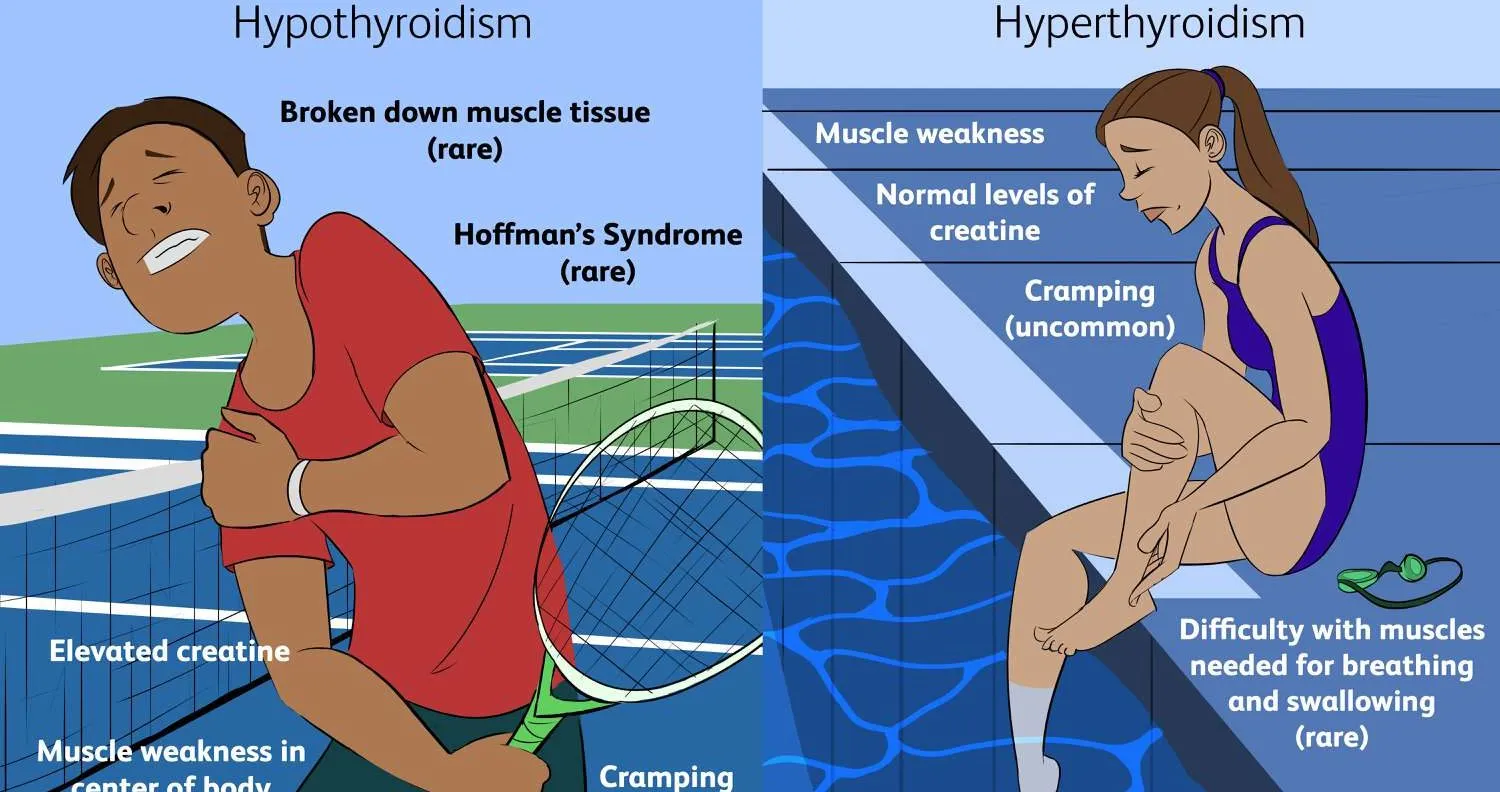Hypothyroid Myopathy vs. Fibromyalgia: Understanding the Differences
When considering chronic, unexplained aches and pains in muscles, tendons, or joints, it is essential to differentiate between thyroid dysfunction and fibromyalgia. The symptoms of these conditions can overlap significantly, leading to
potential misdiagnosis or confusion. Hypothyroidism, characterized by inadequate production of thyroid hormone, can manifest with musculoskeletal pain due to various mechanisms such as muscle swelling pressing on nerves or tissue hypometabolism. On the other hand, fibromyalgia is diagnosed based on a cluster of symptoms like tender points, disturbed sleep, fatigue, depression, and digestive issues.
musculoskeletal pain due to various mechanisms such as muscle swelling pressing on nerves or tissue hypometabolism. On the other hand, fibromyalgia is diagnosed based on a cluster of symptoms like tender points, disturbed sleep, fatigue, depression, and digestive issues.In cases where individuals experience musculoskeletal pain that could be attributed to fibromyalgia but may actually be linked to undiagnosed or undertreated hypothyroidism, addressing the underlying thyroid disorder can often alleviate the pain. Proper diagnosis and treatment of hypothyroidism are crucial in such scenarios to ensure that the root cause of the pain is effectively managed.
Hypothyroid Myopathy Symptoms: Hypothyroid myopathy is characterized by muscle weakness, aches, and cramping. The weakness is often most severe in the muscles of the thighs or shoulders. This can lead to difficulties in activities like climbing stairs or combing hair. In rare cases, individuals with hypothyroidism may experience Hoffman’s syndrome, which involvesmuscle hypertrophy leading to stiffness, weakness, and pain in various body parts.
Hyperthyroid Myopathy Symptoms: On the other hand, hyperthyroid myopathy presents with muscle weakness mainly in the shoulders, upper arms, hips, and thighs. While muscle cramps and aches can occur, they are less common compared to hypothyroid myopathy. Weakness in the throat, face, and respiratory muscles may also be experienced. Severe cases of hyperthyroid myopathy can lead to life-threatening conditions like rhabdomyolysis.
WHAT IS HYPOTHYROID MYOPATHY?
Hypothyroid myopathy is a muscle disorder caused by low levels of thyroid hormones (T3 and T4), which are essential for regulating metabolism, muscle energy, and protein repair.
Without enough thyroid hormone:
– Mitochondria (energy producers) in muscle cells underperform -> less ATP -> muscle fatigue and weakness.
– Muscle proteins break down more easily, causing cramps and stiffness.
– Glycogen accumulates in muscles, making contractions sluggish.
More clinical details:
– Gradual onset over months or years.
– Mainly affects proximal muscles (thighs, shoulders) -> trouble climbing stairs or lifting arms.
– Reflexes slow down, especially at the ankle.
– Blood tests may show high creatine kinase (CK) and abnormal thyroid labs (high TSH, low T4).
Treatment:
– Standard care -> thyroid hormone replacement (levothyroxine).
– Bioacoustic therapy -> delivers low-frequency sound to stimulate thyroid function, improve metabolism, and support muscle recovery.
What is Hyperthyroid Myopathy?
Hyperthyroid myopathy is a muscle disorder caused by excess thyroid hormones (T3 and T4), typically seen in people with hyperthyroidism (like Graves’ disease or toxic nodular goiter).
When thyroid hormone levels are too high:
Muscle metabolism becomes overactive, which leads to protein breakdown and muscle wasting.
Muscle fibers shrink and lose strength, especially in the proximal (near-the-body) muscles.
Over time, this causes progressive muscle weakness, tremors, and fatigue.
Common symptoms include:
✅ Muscle weakness — especially in proximal muscles (thighs, shoulders, hips, upper arms)
✅ Difficulty climbing stairs, rising from a chair, or lifting objects overhead
✅ Muscle wasting (atrophy) over time if untreated
✅ Muscle cramps or stiffness (less common than in hypothyroid myopathy)
✅ Tremors (fine shaking, usually in hands)
✅ Fatigue and exercise intolerance (getting tired quickly)
✅ Hyperreflexia (overactive reflexes)
✅ Sometimes mild muscle pain or soreness
Additional signs of hyperthyroidism that may accompany it:
Unintentional weight loss
Rapid or irregular heartbeat (palpitations)
Heat intolerance, sweating
Anxiety, restlessness
Insomnia
While fibromyalgia does not have an official diagnostic test and is identified based on symptoms and tender points assessment, hypothyroidism diagnosis typically involves evaluating levels of thyroid-stimulating hormone (TSH) along with additional tests like thyroid antibodies, free T3, free T4, and reverse T3 for a comprehensive understanding of thyroid health.
WHAT IS FIBROMYALGIA?
Fibromyalgia is a chronic pain condition caused by abnormal pain processing in the brain and spinal cord,
called central sensitization.
In fibromyalgia:
– The nervous system overreacts to normal sensory input, amplifying pain.
– Neurotransmitters like serotonin and substance P are imbalanced.
– Triggers can include stress, infections, or trauma.
More clinical details:
– Widespread burning, aching, or stabbing pain.
– Allodynia (pain from light touch) and hyperalgesia (exaggerated pain response).
– Associated issues: fatigue, poor sleep, fibro fog, headaches, IBS.
– Labs are typically normal.
Treatment:
– Standard care -> exercise, CBT, stress reduction, medications.
– Bioacoustic therapy -> helps regulate abnormal pain signals, reduces stress, improves sleep, and promotes nervous system balance.
KEY DIFFERENCES AT A GLANCE
| Feature | Hypothyroid Myopathy | Fibromyalgia |
|---|---|---|
| Main problem | Low thyroid hormone → muscle dysfunction | Central nervous system pain amplification |
| Pain type | Stiffness, cramps, mild pain | Widespread, chronic burning or aching pain |
| Weakness | Common, especially thighs/shoulders | Not typical |
| Labs | High CK, abnormal thyroid labs | Normal labs |
| Standard Treatment | Thyroid replacement (levothyroxine) | Exercise, stress reduction, medications |
| Bioacoustic Therapy | Stimulates thyroid function, improves muscle tone | Calms pain signals, reduces stress, improves sleep |
– Main problem: Hormonal-metabolic vs. central nervous system amplification
– Pain type: Stiffness, cramps vs. widespread aching
– Weakness: Common in hypothyroid, not typical in fibromyalgia
– Labs: Abnormal thyroid tests vs. normal labs- Bioacoustic Therapy: Supports thyroid recovery vs. calms pain signals.
WHY MISDIAGNOSIS HAPPENS
10-15% of fibromyalgia patients may have undiagnosed thyroid disorders. Both share fatigue, muscle
discomfort, and cognitive issues. Misdiagnosis risks include missing thyroid disease or giving unnecessary thyroid medication.
BIOACOUSTIC THERAPY: A PROMISING COMPLEMENT
– For hypothyroid/hypertyroid myopathy: Detects thyroid frequency imbalances; delivers sound to stimulate function.
– For fibromyalgia: Identifies pain and stress patterns; delivers sound to calm the nervous system.
FINAL TAKEAWAY
Accurate diagnosis matters! Bioacoustic therapy can help both identify and treat these conditions, adding a holistic layer to care.
In conclusion, both hypothyroidism and hyperthyroidism can manifest as myopathies with distinct sets of symptoms affecting different muscle groups. Understanding these manifestations is crucial for accurate diagnosis and appropriate management to alleviate muscle pain and weakness associated with thyroid dysfunction.
BioAcoustic Thyroid & Fibromyalgia Research : Through our research we are now able to assess for the differences between Thyroid functioning and Fibromyalgia and provide the body with sound presentation to help re-balance the frequencies that are affecting the hormones, muscles, trigger points, weakness, fatigue etc. We can also support the body with the necessary anti-oxidents and nutritents to support optimal functioning.
Authoritative References Used: https://iask.ai/, https://www.verywellhealth.com



